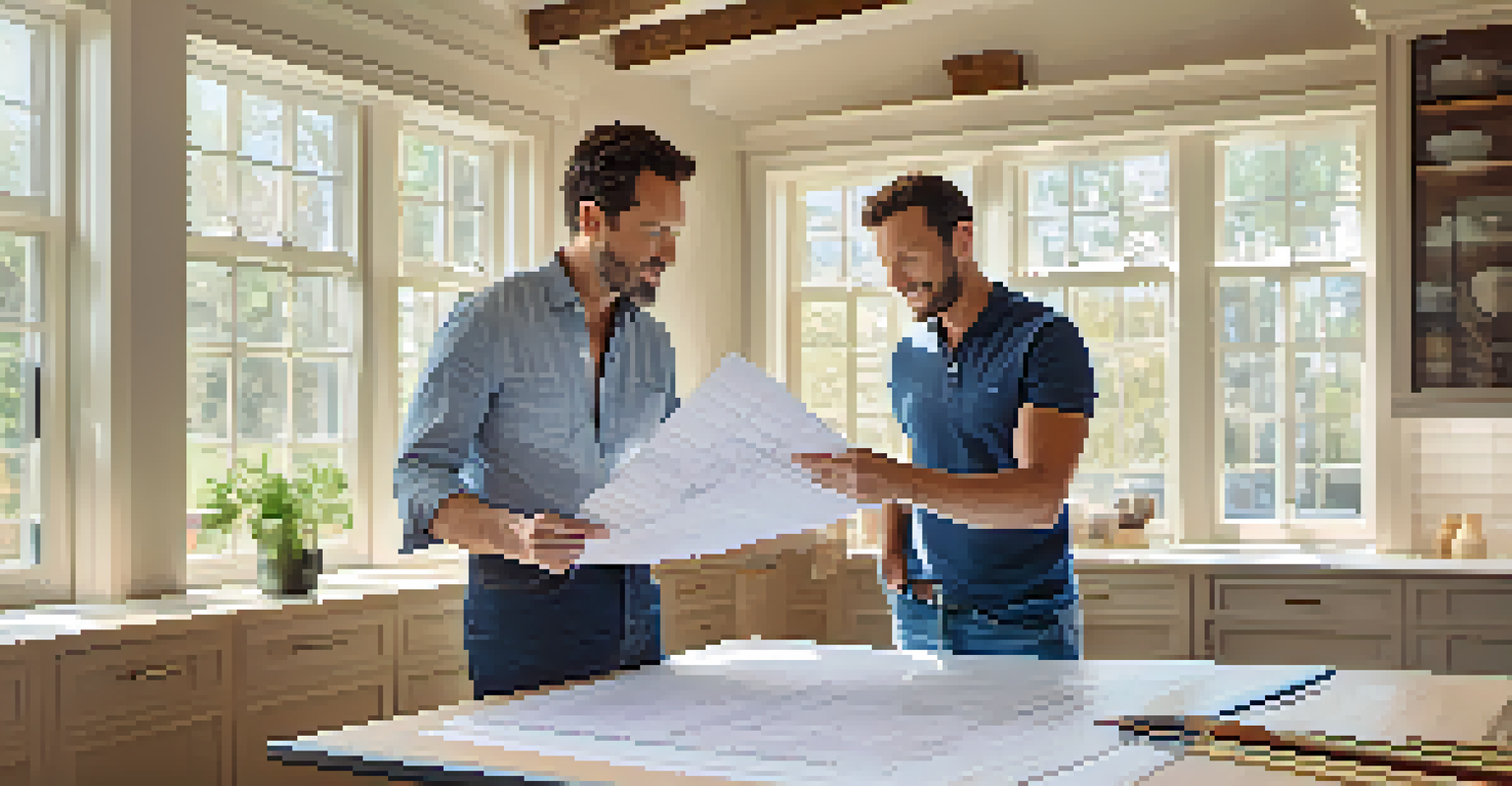Step-by-Step Guide to Creating Your Renovation Blueprint

Understanding the Importance of a Renovation Blueprint
A renovation blueprint serves as your project's roadmap, detailing every aspect from start to finish. It helps you visualize your goals and ensures that your ideas are feasible within your space.
A goal without a plan is just a wish.
Without a clear blueprint, renovations can quickly spiral out of control, leading to increased costs and extended timelines. Think of it like navigating a new city without a map; you might end up lost, wasting both time and resources.
By investing time in creating a solid blueprint, you're setting the foundation for a successful renovation that meets your needs and enhances your home’s value.
Gathering Inspiration for Your Renovation Design
Before diving into the nitty-gritty, take some time to gather inspiration. Browse through design magazines, Pinterest boards, or even visit local showrooms to see what resonates with you.

This creative phase is about exploring styles, colors, and layouts that captivate your imagination. Make notes, collect images, and even create a mood board that reflects your vision.
Importance of a Renovation Blueprint
A renovation blueprint acts as a roadmap, helping visualize goals and prevent costly mistakes.
Remember, this is your space, and it should reflect your personality and lifestyle. So, let your creativity flow and think about what will make you feel at home.
Assessing Your Space and Setting Realistic Goals
Once you've gathered your inspiration, it’s time to assess your current space. Take measurements and note any architectural features that could impact your design choices.
The details are not the details. They make the design.
Setting realistic goals is crucial; consider what you want to achieve with the renovation and any limitations you might face, such as budget or structural constraints. This will help you prioritize your needs effectively.
By understanding your space and objectives, you can create a blueprint that not only looks great but also fits perfectly into your lifestyle.
Creating a Budget for Your Renovation Project
Budgeting is often the least exciting part of renovations, but it’s one of the most important. Start by listing all potential costs, including materials, labor, permits, and unexpected expenses.
Don’t forget to set aside a contingency fund—typically 10-20% of your total budget—for those surprise costs that always seem to pop up. It’s like having an umbrella on a cloudy day; you might not need it, but it’s good to be prepared.
Gathering Inspiration is Key
Collecting design inspiration allows you to explore styles and create a space that reflects your personality.
With a clear budget in place, you can make informed decisions that keep your project on track financially, allowing you to focus on the fun parts of the renovation.
Drafting Your Renovation Blueprint: Step-by-Step
Now comes the fun part—drafting your renovation blueprint. Start by sketching your current layout and then overlay your new design ideas, keeping flow and functionality in mind.
Consider using design software or apps that can help you visualize the space in 3D. This can be particularly useful for understanding how different elements will interact within your home.
As you draft, keep iterating on your ideas, soliciting feedback from family or friends, and making adjustments until you’re satisfied with the final design.
Reviewing Your Blueprint with Professionals
Once you have a solid draft, it's time to consult with professionals. Architects, designers, or contractors can provide valuable insights and identify any potential issues with your plans.
This collaboration can help refine your blueprint and ensure that it meets all necessary building codes and regulations. Consider this phase as a quality check for your vision.
Budgeting for Your Renovation
Setting a clear budget, including a contingency fund, is essential for keeping your renovation on track financially.
Their expertise can save you time and money down the line, ensuring that your renovation is both beautiful and structurally sound.
Finalizing Your Renovation Blueprint for Execution
With professional feedback in hand, it’s time to finalize your blueprint for execution. Make any necessary adjustments and ensure all details are clearly documented to avoid confusion during the renovation.
This finalized document will serve as a guide for contractors and tradespeople, outlining exactly what you expect from the project. Clear communication is key to a successful renovation.

By presenting a well-prepared blueprint, you're setting the stage for a smoother, more efficient renovation process.
Preparing for the Renovation Process Ahead
With your blueprint in hand, it’s time to prepare for the renovation process. This involves not only organizing logistics but also mentally preparing for the changes to your home.
Clear out the renovation area and make arrangements for any temporary living situations if necessary. It’s like packing for a trip; the more you prepare, the smoother the journey will be.
As you embark on this exciting transformation, remember to stay flexible and open to adjustments along the way. After all, sometimes the best moments arise from unexpected changes.